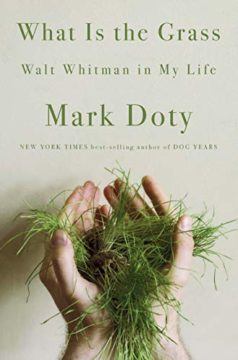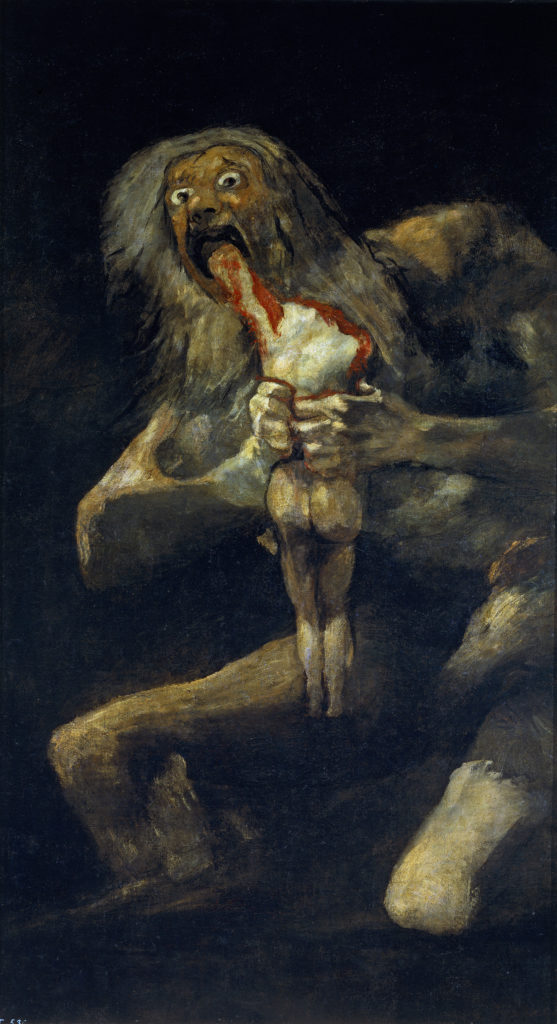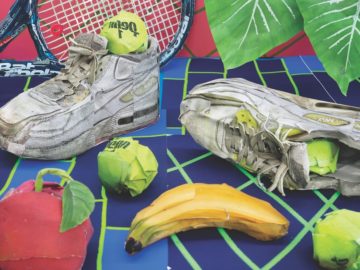Virginia Gewin in Nature:
 On 4 March, Christopher Jackson tweeted that he was leaving the University of Manchester, UK, to work at Jacobs, a scientific-consulting firm with headquarters in Dallas, Texas. Jackson, a prominent geoscientist, is part of a growing wave of researchers using the #leavingacademia hashtag when announcing their resignations from higher education. Like many, his discontent festered in part owing to increasing teaching demands and pressure to win grants amid lip-service-level support during the COVID-19 pandemic.
On 4 March, Christopher Jackson tweeted that he was leaving the University of Manchester, UK, to work at Jacobs, a scientific-consulting firm with headquarters in Dallas, Texas. Jackson, a prominent geoscientist, is part of a growing wave of researchers using the #leavingacademia hashtag when announcing their resignations from higher education. Like many, his discontent festered in part owing to increasing teaching demands and pressure to win grants amid lip-service-level support during the COVID-19 pandemic.
He is one of many academics who say the pandemic sparked a widespread re-evaluation of scientists’ careers and lifestyles. “Universities, spun up to full speed, expected the same and more” from struggling staff members, he says, who are now reassessing where their values lie. The demands add to long-standing discontent among early-career researchers, who must work longer and harder to successfully compete for a declining number of tenure-track or permanent posts at universities. And Jackson had another reason. He received what was, in his opinion, a racially insensitive e-mail that constituted harassment and alluded to using social media to police staff opinions, which, he says, was the last straw. Jackson filed a formal complaint and the University of Manchester responded: “The investigation has now concluded. We have made Professor Jackson aware of its findings as well as the recommendations and actions we will be taking forward as an institution.”
The level of unhappiness among academics was reflected in Nature’s 2021 annual careers survey.
More here.

 “I’m stricken by the ricochet wonder of it all,” poet Diane Ackerman wrote in her sublime
“I’m stricken by the ricochet wonder of it all,” poet Diane Ackerman wrote in her sublime  What I take from this is not so much that Power is a radical but rather that he believes style is not a substitute for ideas, nor should it be used as an evasive measure to obscure areas of darkness or deployed as a bully in debate. His own clear prose works hard at allowing him to do some expansive thinking in what is still a concise amount of space. In the longer essays various big ideas (example: the Apocalypse) are explored in some depth with a lot of ground crisply covered in relatively few pages.
What I take from this is not so much that Power is a radical but rather that he believes style is not a substitute for ideas, nor should it be used as an evasive measure to obscure areas of darkness or deployed as a bully in debate. His own clear prose works hard at allowing him to do some expansive thinking in what is still a concise amount of space. In the longer essays various big ideas (example: the Apocalypse) are explored in some depth with a lot of ground crisply covered in relatively few pages. We have probably all seen images from Goya’s so-called Black Paintings whether we realize it or not. The image known as Saturn Devouring His Son (Goya did not title these works, the titles came from later art historians) is especially ubiquitous. The painting depicts the ancient Greek and Roman mythological story in which Saturn (Kronos in the Greek) eats his own children. You’ll remember that there was a prophecy. One of the children of Saturn would overthrow him. Saturn’s solution to this problem was to eat all the children. This worked for a time, until, inevitably, it did not. But that is another story.
We have probably all seen images from Goya’s so-called Black Paintings whether we realize it or not. The image known as Saturn Devouring His Son (Goya did not title these works, the titles came from later art historians) is especially ubiquitous. The painting depicts the ancient Greek and Roman mythological story in which Saturn (Kronos in the Greek) eats his own children. You’ll remember that there was a prophecy. One of the children of Saturn would overthrow him. Saturn’s solution to this problem was to eat all the children. This worked for a time, until, inevitably, it did not. But that is another story. Imagine you heard a scientist saying the following:
Imagine you heard a scientist saying the following: On or around 1939 debates about international political economy changed. Over the course of the Cold War, economic nationalism—the attempt to use the state to advance a country’s economic interests—was crowded out of official discourse by two competing universalisms, communism on one side and liberalism on the other. Over the last few decades, however, this opposition has been scrambled. First Marxist universalism failed; the Sino-Soviet split fractured the communist project before the USSR collapsed altogether. Then, after a brief period in the sun on the international stage, liberal universalism too began to falter in a declining arc from Iraq and the Global Financial Crisis to Donald Trump’s victory on an “America First” platform.
On or around 1939 debates about international political economy changed. Over the course of the Cold War, economic nationalism—the attempt to use the state to advance a country’s economic interests—was crowded out of official discourse by two competing universalisms, communism on one side and liberalism on the other. Over the last few decades, however, this opposition has been scrambled. First Marxist universalism failed; the Sino-Soviet split fractured the communist project before the USSR collapsed altogether. Then, after a brief period in the sun on the international stage, liberal universalism too began to falter in a declining arc from Iraq and the Global Financial Crisis to Donald Trump’s victory on an “America First” platform. For more than a half-century, America has been a world leader in space, from the space race of the 1960s to the shuttle to numerous deep space probes. But this leadership has often been reluctant — and in tension with a public that has been at best ambivalent and at worst outright opposed to endeavors to explore the universe. Many Americans have little interest in space and would prefer to spend money
For more than a half-century, America has been a world leader in space, from the space race of the 1960s to the shuttle to numerous deep space probes. But this leadership has often been reluctant — and in tension with a public that has been at best ambivalent and at worst outright opposed to endeavors to explore the universe. Many Americans have little interest in space and would prefer to spend money  On a rainy afternoon in mid-April, the singer and songwriter Angel Olsen steered a Subaru through Asheville, North Carolina, while a cardboard box of VHS tapes clattered in the back seat. Olsen, who is thirty-five, had recently excavated them from her childhood home, in St. Louis. Some promised footage of significant events—“Angel’s Graduation,” “Angel’s First Day of Preschool”—and others were labelled “the pokemon” and “world premiere dark horizon.” After pulling up at a video-restoration shop, Olsen did some hasty sorting in the parking lot, trying to decide which tapes were worth dusting off with a tissue and which ones she could toss. Olsen, who was adopted when she was three years old, has spent much of the past two years figuring out what to hold on to and what to surrender. In 2021, her adoptive mother and father died two months apart (her mother, from heart failure, at age seventy-eight; her father, in his sleep, at eighty-nine), shortly after she realized and told them she was gay. Ever since, Olsen has been sifting through the material and psychological aftermath.
On a rainy afternoon in mid-April, the singer and songwriter Angel Olsen steered a Subaru through Asheville, North Carolina, while a cardboard box of VHS tapes clattered in the back seat. Olsen, who is thirty-five, had recently excavated them from her childhood home, in St. Louis. Some promised footage of significant events—“Angel’s Graduation,” “Angel’s First Day of Preschool”—and others were labelled “the pokemon” and “world premiere dark horizon.” After pulling up at a video-restoration shop, Olsen did some hasty sorting in the parking lot, trying to decide which tapes were worth dusting off with a tissue and which ones she could toss. Olsen, who was adopted when she was three years old, has spent much of the past two years figuring out what to hold on to and what to surrender. In 2021, her adoptive mother and father died two months apart (her mother, from heart failure, at age seventy-eight; her father, in his sleep, at eighty-nine), shortly after she realized and told them she was gay. Ever since, Olsen has been sifting through the material and psychological aftermath. RICHARD WILLIAMS DEMANDS GLORY. The pursuit of glory is revised madness, the ambition of addicts, to get so high they collapse, and are forced to repeat the ascent as if for the first time. It’s preemptive repentance disguised as innocent yearning to win. You have to need vindication to need victory so desperately. Richard Williams is looking for redemption. In a scene from a 1990s video of Richard, father of tennis champions Venus and Serena Williams, we see him genuflecting on a tennis court in Compton, California, in front of a shopping cart full of tennis balls—the ground swells with them. He’s gathering the splayed balls and placing them into red plastic milk crates with the reverence of a praise dancer. What altar is this? A shrine of crumbling adobe, chalk, felt, and plastic. What utter fixation on the unglamorous, what risk of a dedication with no yield? What we know now turns the pathos in Richard’s gesture here into dramatic irony. The menial duties of this father intent on training his daughters to be the best athletes in the world will be redeemed. He will not kneel and scour the ground for these fuzzy green chess pieces in vain.
RICHARD WILLIAMS DEMANDS GLORY. The pursuit of glory is revised madness, the ambition of addicts, to get so high they collapse, and are forced to repeat the ascent as if for the first time. It’s preemptive repentance disguised as innocent yearning to win. You have to need vindication to need victory so desperately. Richard Williams is looking for redemption. In a scene from a 1990s video of Richard, father of tennis champions Venus and Serena Williams, we see him genuflecting on a tennis court in Compton, California, in front of a shopping cart full of tennis balls—the ground swells with them. He’s gathering the splayed balls and placing them into red plastic milk crates with the reverence of a praise dancer. What altar is this? A shrine of crumbling adobe, chalk, felt, and plastic. What utter fixation on the unglamorous, what risk of a dedication with no yield? What we know now turns the pathos in Richard’s gesture here into dramatic irony. The menial duties of this father intent on training his daughters to be the best athletes in the world will be redeemed. He will not kneel and scour the ground for these fuzzy green chess pieces in vain. FOR THE PAST DECADE,
FOR THE PAST DECADE, Jokes, sarcasm and humor require understanding the subtleties of language and human behavior. When a comedian says something sarcastic or controversial, usually the audience can discern the tone and know it’s more of an exaggeration, something that’s learned from years of human interaction.
Jokes, sarcasm and humor require understanding the subtleties of language and human behavior. When a comedian says something sarcastic or controversial, usually the audience can discern the tone and know it’s more of an exaggeration, something that’s learned from years of human interaction. In all of physical law, there’s arguably no principle more sacrosanct than the second law of thermodynamics — the notion that entropy, a measure of disorder, will always stay the same or increase. “If someone points out to you that your pet theory of the universe is in disagreement with Maxwell’s equations — then so much the worse for Maxwell’s equations,” wrote the British astrophysicist Arthur Eddington in his 1928 book The Nature of the Physical World. “If it is found to be contradicted by observation — well, these experimentalists do bungle things sometimes. But if your theory is found to be against the second law of thermodynamics I can give you no hope; there is nothing for it but to collapse in deepest humiliation.” No violation of this law has ever been observed, nor is any expected.
In all of physical law, there’s arguably no principle more sacrosanct than the second law of thermodynamics — the notion that entropy, a measure of disorder, will always stay the same or increase. “If someone points out to you that your pet theory of the universe is in disagreement with Maxwell’s equations — then so much the worse for Maxwell’s equations,” wrote the British astrophysicist Arthur Eddington in his 1928 book The Nature of the Physical World. “If it is found to be contradicted by observation — well, these experimentalists do bungle things sometimes. But if your theory is found to be against the second law of thermodynamics I can give you no hope; there is nothing for it but to collapse in deepest humiliation.” No violation of this law has ever been observed, nor is any expected. Seattle City Councilmember Kshama Sawant and the
Seattle City Councilmember Kshama Sawant and the  THE CARTHAGINIANS WERE
THE CARTHAGINIANS WERE On 4 March, Christopher Jackson tweeted that he was leaving the University of Manchester, UK, to work at Jacobs, a scientific-consulting firm with headquarters in Dallas, Texas. Jackson, a prominent geoscientist, is part of a growing wave of researchers using the #leavingacademia hashtag when announcing their resignations from higher education. Like many, his discontent festered in part owing to increasing teaching demands and pressure to win grants amid lip-service-level support during the COVID-19 pandemic.
On 4 March, Christopher Jackson tweeted that he was leaving the University of Manchester, UK, to work at Jacobs, a scientific-consulting firm with headquarters in Dallas, Texas. Jackson, a prominent geoscientist, is part of a growing wave of researchers using the #leavingacademia hashtag when announcing their resignations from higher education. Like many, his discontent festered in part owing to increasing teaching demands and pressure to win grants amid lip-service-level support during the COVID-19 pandemic.